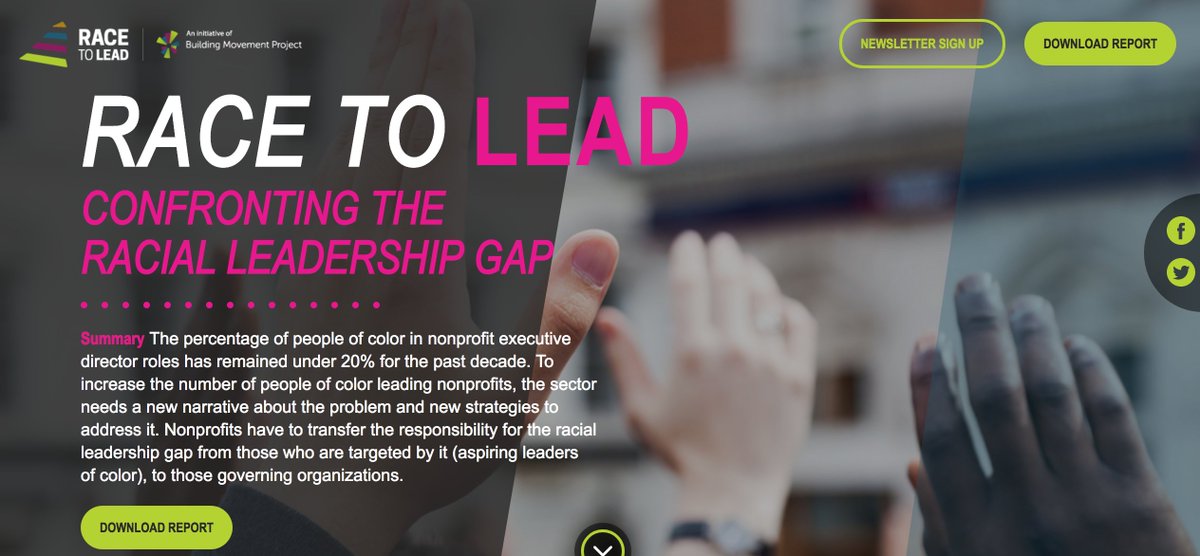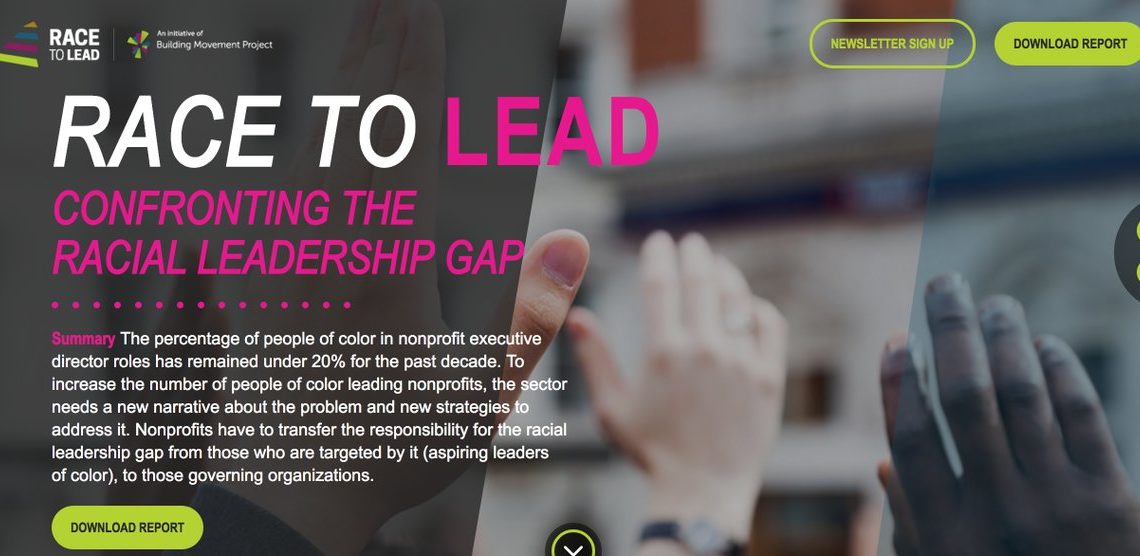By Frances Kunreuther and Sean Thomas-Breitfeld
The Chronicles of Philanthropy, June 6, 2017 —
Why are there so few leaders of color in nonprofit organizations?
It’s because of a persistent bias in the nonprofit world that systematically weeds out qualified candidates of color, we found in a study of more than 4,000 people — not a lack of aspiring leaders ready for the job, as is commonly assumed.
Despite years of deliberating the question of diversity, little has changed. Blacks, Latinos, Asians, and other racial and ethnic minorities still fill fewer than 20 percent of nonprofit executive-director positions, a figure that hasn’t budged for more than a decade.
Whether you look at the 2006 CompassPoint/Meyer Foundation study “Daring to Lead,” which showed 17 percent of the top leaders are people of color, or BoardSource’s 2015 “Leading With Intent” report, which put the figure at only 11 percent, it is clear that nonprofit leaders too seldom reflect the diversity of the communities they serve.
To better understand this racial leadership gap, we not only surveyed people from across the nonprofit landscape but also conducted focus groups and more than three dozen interviews with nonprofit and foundation leaders as well as management experts to hear their views of the barriers people of color face.

The Building Movement Project
The results and responses, which we published in our new report, “Race to Lead: Confronting the Nonprofit Racial Leadership Gap,” went against the common wisdom about both causes and remedies.
It’s not enough — and may be misdirected — to assume we need to train people of color to be leaders. Instead, our findings indicate that nonprofits must tackle head on the biases that shut people of color out of top levels of nonprofit organizations. Among our conclusions:
The racial leadership gap isn’t about education, ambition, or qualifications.
Before conducting the survey, we often heard nonprofit executives say there simply are not enough interested and qualified people of color to lead their organizations. But our data tells another story.
When we asked survey participants about their level of education and their years of experience in nonprofits, people of color were very similar to whites. They held similar positions and made comparable salaries. Even more surprising, there was little difference in the training whites and people of color received in essential nonprofit functions, such as financial planning, goal setting, articulating a vision, advocacy, and collaboration.
And people of color don’t lack the ambition to lead. In fact, people of color were more interested in leading nonprofits than their white counterparts — with 50 percent of people of color surveyed aspiring to become a nonprofit CEO or executive director compared with 40 percent of whites. Aspiring leaders of color — like their white peers — reported they felt prepared for and had the qualities needed to be a good leader.
People of color in nonprofits face additional tasks and challenges that get in the way of climbing the career ladder.
Most of those who took the survey felt overworked and experienced high rates of burnout. However, people of color reported that they faced an extra duty: They were often called upon to represent people of their race or ethnicity both inside and outside of their organization.
This created increased responsibilities and work. As one person of color explained in a write-in response, staff members at her organization looked to her to deal with problems related to race, which was not only emotionally taxing but also completely unacknowledged as part of her job.
We also found that, even though employees of color received similar types of training compared with their white counterparts, they worried more about whether they had enough training in management and related skills to be a leader.
When presented with this finding, people of color in our focus groups understood this response all too well. They told us aspiring leaders of color don’t really need more training; they are just preparing for the extra scrutiny and judgment they will face as they seek to advance their careers.
In fact, more than a third of people of color reported that their race or ethnicity had negatively affected their career advancement. Hundreds of write-in responses described disturbing cases of overt racism and discrimination in nonprofit workplaces.
People of color need access to networks and resources for advancement.
Latinos, blacks, Asians, and other racial and ethnic minorities reported that they did not have the relationships with donors, role models, and the other types of networks that they thought would help them succeed as leaders. In other words, they were less likely than whites to say they had the contacts and relationships needed to advance and were more likely to fear they would have a hard time raising money.
Our data suggests that rather than needing more skills training, people of color need professional connections and access to sources of funding that are key factors in successful organizational leadership.
Grant makers should assess their practices to think about ways they can connect grantees and staff members of color to networks that can open doors for career advancement and funding.
We have too often relied on explanations that assume the deficit is in the potential pool of leaders. Instead, we should place the responsibility on those governing nonprofits who are not hiring people of color for executive-leadership positions.
Talented, ambitious, and qualified people of color are ready to lead, but they are thwarted by assumptions about race, the idea of “cultural fit,” and preconceived notions of what a leader looks like — the structural barriers that exist at nonprofits.
Asking people of color to train their way out of the racial-leadership gap has not worked.
Instead, we need to challenge the assumptions and implicit biases deeply embedded in nonprofits and in our society at large. These include educating board members, volunteers, and all who work at nonprofits on the best ways to achieve race equity. It is especially important to target recruiters and others who conduct executive searches so they present viable candidates of diverse races. All groups should institute good, effective human-resource practices that can compensate for biases at work.
Grant makers can do more to support organizations led by people of color that challenge board members’ assumptions that whites are better at raising money.
And everyone can push for changes in practices that perpetuate our racial hierarchies. Foundations and key nonprofit associations could take the lead by talking about racism, power, and privilege.
Aspiring leaders of color still need support that will help them face often unfounded assumptions about their skills and abilities. They will especially benefit from learning concrete ways to navigate and challenge the biases and systems they will encounter as they advance in their careers.
The benefits to organizations of fostering diverse leadership are clear from years and years of research. Nonprofits, especially those whose missions focus on social justice, must rethink how they go about elevating diverse voices to lead our organizations.
Frances Kunreuther and Sean Thomas-Breitfeld co-direct the Building Movement Project, which has just released the report “Race to Lead: Confronting the Nonprofit Racial Leadership Gap,” on which this column is based.











